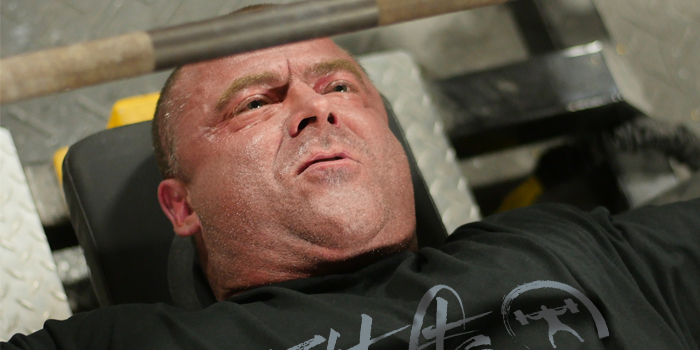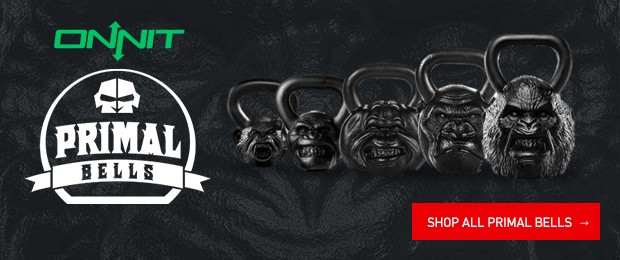
Kettlebell training is a simple, excellent tool to utilize for metabolic conditioning, improving work capacity, getting lean, and strengthening joints, ligaments, and tendons. Kettlebells require a little patience and some practice to use efficiently and utilize movements that target every muscle group. You can use them for strength training, conditioning, metabolic work, and improving your overall general health and work capacity. Kettlebells are very versatile and portable tools. The first time you use them, you will understand how powerful they can be when added to your training regimen. Here are a few technique tips and key points to consider when getting started.
Safety
Always ensure you have a sufficient space around your training area to swing a kettlebell without interfering with other trainees. Make sure flooring is dry and free of debris. Evaluate your conditioning. If you are extremely fatigued or not able to complete a movement or task, rest up and train when you are ready.
Gripping the Kettlebell
To press the kettlebell overhead utilizing either the press, push press, jerk, or snatch, the kettlebell must be gripped properly to avoid stress on the wrist joint, which results in early fatigue and termination of the training set.
Key Points:
- Place a kettlebell on the ground.
- Hold your hand “face-up” and insert four fingers through the kettlebell handle.
- Place the “V” between your thumb and index finger against one side of the handle and move your forearm towards the kettlebell and your thumb away from the kettlebell.
Note: This will allow the weight of the kettlebell to rest on your forearm, not your wrist, during your movements.
WATCH: Kettlebell Chains and Compounds with Ken and Sheri Whetham
The Low Swing
The low swing is a movement that is designed to improve your efficiency for all movements requiring you to propel the kettlebell in an upward trajectory. Practicing the low swing will groove your hip movement to allow maximum power output and help you to efficiently accept the weight of a descending kettlebell.
Key Points:
- Forearm stays fixed to your lower abdomen during the low swing.
- The hip/shoulder relationship: hips forward, shoulders back and then shoulders forward, hips back.
- Knees should make a “U” pattern during the low swing.
Note: Practicing the low swing will assist all other movements with a kettlebell.
The Swing
The swing is a back-and-forth pendulum motion of the arm, holding a kettlebell between your legs and using your shoulders as a hinge. The swing is a unique exercise, as it has no rest position. It is a superior exercise for general warm-up and more often used as a finisher exercise.
The swing is a full-body movement but focuses on the musculature of the posterior chain; hamstrings, glutes, quads, both upper and lower back, as well as core, grip, and arms are all utilized.
Key Points:
- Feet should be shoulder width apart.
- Initial movement with the kettlebell is backwards then propel upward.
- At the top of the movement, chin goes forward, hips go back. Keep your back straight.
- Breathe in on the decent and breathe out on the ascent of the kettlebell.
Note: Kettlebell swings are great for conditioning.
One-Arm Swing
The one-arm swing is the similar to the regular swing except you only use one arm to swing the kettlebell. All the key points from the regular swing carry over to the one-arm swing.
Alternating One-Arm Swing
The alternating one-arm swing is similar to the one-arm swing except you alternate hands at the top of swing after every repetition. This exercise can be challenging and requires good coordination. The key points from the regular swing carry over to the alternating one-arm swing.
One-Arm Clean
The one-arm clean is described as a swing action of the kettlebell, catching the bell in the rack position. The one-arm clean is a full-body movement but focuses on the musculature of the posterior chain; hamstrings, glutes, both upper and lower back, core, grip, and arms all get targeted with cleans.
Key Points:
- Utilize the low swing and at the top of the apex of the kettlebell swing.
- Pull the kettlebell up along your torso.
- Relax your grip and slide your hand underneath and into the kettlebell handle finishing in the rack position.
- Check your rack position before next repetition.
Helpful Hints: Visualize a train track running up the center of your abdomen to your chest and a pair of train wheels on the heel of the hand working the clean. Keep the heel of your hand right along your abdomen when pulling the kettlebell. Don’t let it “get away” or you won’t be able to get a smooth transition into the rack position.
Practice with one or two low swings then one clean. Repeat.
WATCH: Mastering the Kettlebell Clean
The Rack Position
The rack position is described as being in a resting position while preparing to launch the kettlebell into a press, push press, jerk, or overhead movement. If you are doing a long competitive set, it is important to find a good rack position to save energy for your reps. You should not be wasting energy trying to rest.
Key Points:
- Three points of contact for a good rack: hand, shoulder, and hip.
- Your rack should allow you to rest on your skeletal structure, not your muscular structure.
- For one-arm, straighten your knee, ensure three points of contact, and lean back.
Note: It takes a lot of practice to groove a good rack position and to land the kettlebell into the rack position with minimal effort. Keep practicing!
The Press
The one-arm press is described as lifting the kettlebell overhead from the rack position without the use of the legs. The lifter should first clean the kettlebell to the rack position and begin pressing.
The press is strictly an upper-body movement; it focuses on the shoulders, triceps, and upper back and torso.
Key Points:
- Clean the kettlebell into the rack position.
- Flex your glutes, keep your legs straight, take a sip of breath, and push straight up.
- Hold the lockout overhead.
The Descent:
- While in the lockout position, go up on your toes towards the kettlebell.
- Lean backward from your hips.
- Allow the kettlebell to fall back into the rack position.
WATCH: Dissecting the Kettlebell Snatch
The Push Press
The push press is described as lifting the kettlebell overhead from the rack position with the use of the legs. With a driving force from the legs, the lifter propels the kettlebell upwards with the legs locking out before the arms. The kettlebell should be cleaned into the rack position prior to the push press. The push press is a full body movement. The arms support the weight in the overhead position and through high repetitions at a rapid speed, the joints, tendons, and ligaments get a superior conditioning effect. The quads, glutes, and core are all targeted on the push press.
Key Points:
- Clean the kettlebell into the rack position.
- Flex your knees forward and explode the weight of the kettlebell upward.
- When the legs are extended, keep them straight.
- Hold the lockout position at the top.
Follow the same steps for descending the kettlebell from the lockout position.
The Jerk
The jerk is described as lifting the kettlebell overhead from the rack position with the use of the legs doing a “double-dip.” The arms lockout before the knees lockout.
The jerk is a full body movement. The arms support the weight in an overhead position and through high reps and rapid speed, the joints, tendons, and ligaments get a superior conditioning effect. The quads, glutes, arms, and core are targeted with jerk sets.
Key Points:
- Clean the kettlebell into the rack position.
- Bend the knees forward and propel the kettlebell upward.
- Immediately begin a second knee dip while the elbow locks the weight of the kettlebell.
- When the elbow is in lockout position, straighten the knees to full extension.
When first attempting long cycle, it is difficult to get the timing of the second knee dip. To practicel, try launching the kettlebell from the rack and landing in an upper-body lockout position while keeping your knees bent (in an exaggerated second knee dip).
One-Arm Long Cycle
Long cycle is described as lifting the kettlebell in two different phases: the clean, followed by the jerk, to comprise one exercise cycle. In the first phase, the lifter must clean the kettlebell into the rack position, completely standing up. In the second phase, the lifter must jerk the kettlebell overhead from the same rack position, return the kettlebell to the rack, and then repeat the entire sequence.
Long cycle is a full-body movement; the two phases of this lift produce a very well-rounded training effect, coupling the benefits of both lifts simultaneously. The hamstrings, quads, glutes, upper and lower back, grip, and core are all targeted with long cycle.
Key Points:
- Utilize the key points from the clean into the rack movement.
- Utilize the key points from the jerk movement and combine them into one movement.
WATCH: Technical Demonstration of Competitive Kettlebell Sport
Goblet Squat
The goblet squat is a simple exercise a beginner may use to build the legs with a push movement. It is a very simple and effective exercise.
Key Points:
- Grab the kettlebell by the “horns” (handles) and hold it upside down against your chest,
- With your head up, pelvis back, slowly descend as deep as you can into a squat.
- Keep your weight on your heels and push up into a standing position.
Variations:
- Asymmetrical Squat
- Double Kettlebell Squat
- Overhead Squat
- Weight-out-in-Front Squat
- Goblet Lunge
The exercises you can incorporate with kettlebells are virtually endless. Even simply adding a few sets of heavy swings to finish up your strength-training day is an easy, effective way to add some simple conditioning to your routine. If you take the time to learn some proper technique, you will find a way to utilize them on a regular basis and will reap the benefits of these simple, effective tools.











1 Comment